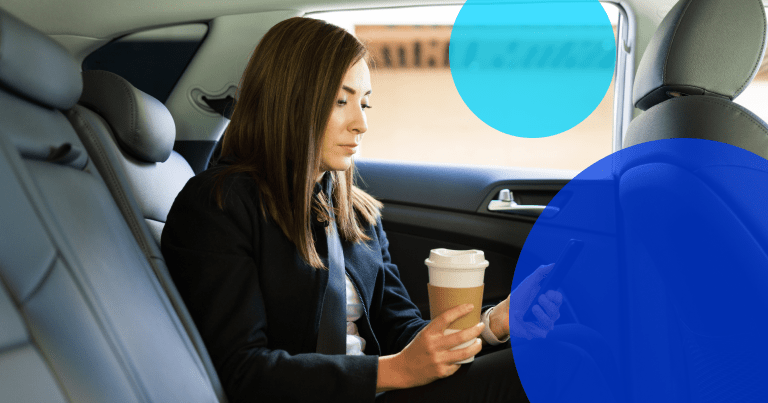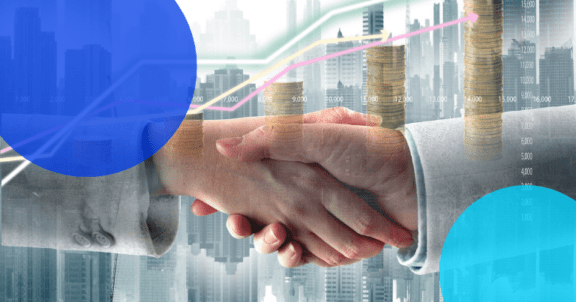The pandemic catapulted retailers into the digital age. In fact, data shows it accelerated the shift to e-commerce by five years. While the transition was challenging for every business, it was much simpler for those in the consumer space with a plethora of straightforward e-commerce and digital payment integrations to choose from. But what about retailers with business customers? The number of stakeholders and layers of infrastructure required behind the scenes to make B2B payments friction-free can be daunting, but it can’t be ignored. Companies like Amazon and Alibaba have entered the B2B space with competitive offerings and profound results. By focusing on a few key priorities, retailers can navigate the payments ecosystem and deliver a truly seamless B2B checkout experience that helps them compete for the best kind of customers – sticky ones.
Friction-free finance, enabled by embedded payments, means making the payment experience almost disappear for a customer. The most illustrative example of embedded payments is in the B2C space, like Uber, where there is no interaction between the customer and the payment after initial app set up. Amazon comes close, with one-click ordering. Now, unsurprisingly, B2B buyers who require a variety of payment options, including net terms and easy reconciliation, are beginning to expect that their purchases be transacted with the ease and convenience of an Uber or Amazon payment.
“Three years of consumer behavior change was squeezed into one year in 2020,” wrote former Forrester Principal Analyst Jay McBain in a recent blog. “Consumers are now demanding online experiences; happily virtual; wanting seamless digital procurement and provisioning, and wanting everything at the click of a button. The delta between B2C buyers and B2B buyers has collapsed during the pandemic. It’s all about speed, convenience, and remote, whether the buyer is acquiring a Peloton or a software product.”1
The processes that enable B2C embedded payments tend to be simpler because they are usually performed by a single stakeholder (a consumer) using a single payment method (a credit card). In contrast, any given B2B transaction may involve multiple stakeholders (the purchaser, the budget owner, the procurement group, the accounts payable team and others) and a variety of payment options (net terms, purchasing cards, and credit cards, among others).
Add to that, each of those B2B purchasing stakeholders has unique needs and preferences that must be met, and each payment option comes with a unique set of procedural and technological integrations to be managed.
Navigating that complexity is tricky but, according to a recent McKinsey & Company survey, B2B leaders aren’t afraid of a challenge. Ninety-six percent of the 3,600 B2B leaders surveyed reported shifting their go-to-market strategy due to the pandemic. By taking it a bit further and focusing on a few key priorities, B2B retailers can win the checkout war:
- Embedded payments can enable improved cashflow at both ends of the B2B transaction when they allow buyers to receive invoices daily, weekly or monthly and make payments on terms that they control. Control and choice are key. More than 90% of respondents in a recent Forrester Consulting study commissioned by Trevipay said that over 90% of surveyed global decision-makers expect that better payment options for B2B customers will improve customer satisfaction, speed up transactions, free up internal resources, and increase business success.
- In keeping with this need for choice, customized terms and lines of credit demonstrate that you respect a business’s unique preferences. A dedicated and custom financial relationship creates loyal customers. The same Forrester Consulting study found that most merchants offer at least two payment terms and more than half of respondents offer installment plans. No matter the robustness of the offer, the end-to-end experience must be custom, quick and seamless to drive instant purchase decisions.
- Another priority is the ability to include data in digital payments, like purchase order numbers and invoices, to support efficient reconciliation at month end, including integrations into common enterprise resource planning platforms. This is essential to move to 100% digital accounts receivable.
- As more customers are acquired online and as globalization accelerates, there is a growing risk of business identity theft and other forms of digital fraud. Working with a partner with sophisticated fraud detection capabilities and maintaining a strong track record for risk decisioning in-house is key.
It is prudent to get out ahead on friction-free B2B payments to meet shifting consumer expectations. If your customers aren’t there already, it won’t be long before their wallets go elsewhere. While B2B embedded payments call for more professional expertise and diligence to enable, the investment is paramount if B2B retailers and marketplaces intend to compete with the big players, win loyal customers, improve cash flow and drive bottom-line results.
Originally published on RetailDive.





